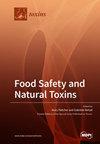鳞翅目害虫对苏云金芽孢杆菌毒素的抗性:田间和实验室演化抗性和交叉抗性的证据、抗性遗传方式、适应性成本、相关机制和管理方案
IF 3.9
3区 医学
Q2 FOOD SCIENCE & TECHNOLOGY
引用次数: 0
摘要
苏云金芽孢杆菌(Bt)毒素是控制鳞翅目害虫的合成杀虫剂的潜在替代品。然而,一些害虫种群的抗药性进化是一种威胁,会降低 Bt 毒素的效果。在这篇综述中,我们总结了来自 20 个国家的 161 项研究的结果,这些研究报告了田间和实验室演化的抗药性、交叉抗药性以及对不同 Bt 毒素的抗药性的遗传、机制和适应成本。这些研究主要涉及美国(70 项)的昆虫,其次是中国(31 项)、巴西(19 项)、印度(12 项)、马来西亚(9 项)、西班牙(3 项)和澳大利亚(3 项)。大多数研究表明,大多数害虫种群对 Bt 毒素表现出敏感性,缺乏交叉抗性。延迟产生抗性的因素包括:抗性的隐性遗传、抗性等位基因的初始频率较低、适应成本增加、非 Bt 的大量庇护所以及金字塔式的 Bt 作物。田间和实验室抗性、交叉抗性以及抗性的遗传、机制和适应性成本的研究结果,有利于预测未来抗性的威胁,并制定有效的策略来维持 Bt 作物的有效性。本文章由计算机程序翻译,如有差异,请以英文原文为准。
Resistance of Lepidopteran Pests to Bacillus thuringiensis Toxins: Evidence of Field and Laboratory Evolved Resistance and Cross-Resistance, Mode of Resistance Inheritance, Fitness Costs, Mechanisms Involved and Management Options
Bacillus thuringiensis (Bt) toxins are potential alternatives to synthetic insecticides for the control of lepidopteran pests. However, the evolution of resistance in some insect pest populations is a threat and can reduce the effectiveness of Bt toxins. In this review, we summarize the results of 161 studies from 20 countries reporting field and laboratory-evolved resistance, cross-resistance, and inheritance, mechanisms, and fitness costs of resistance to different Bt toxins. The studies refer mainly to insects from the United States of America (70), followed by China (31), Brazil (19), India (12), Malaysia (9), Spain (3), and Australia (3). The majority of the studies revealed that most of the pest populations showed susceptibility and a lack of cross-resistance to Bt toxins. Factors that delay resistance include recessive inheritance of resistance, the low initial frequency of resistant alleles, increased fitness costs, abundant refuges of non-Bt, and pyramided Bt crops. The results of field and laboratory resistance, cross-resistance, and inheritance, mechanisms, and fitness cost of resistance are advantageous for predicting the threat of future resistance and making effective strategies to sustain the effectiveness of Bt crops.
求助全文
通过发布文献求助,成功后即可免费获取论文全文。
去求助
来源期刊

Toxins
TOXICOLOGY-
CiteScore
7.50
自引率
16.70%
发文量
765
审稿时长
16.24 days
期刊介绍:
Toxins (ISSN 2072-6651) is an international, peer-reviewed open access journal which provides an advanced forum for studies related to toxins and toxinology. It publishes reviews, regular research papers and short communications. Our aim is to encourage scientists to publish their experimental and theoretical results in as much detail as possible. There is no restriction on the length of the papers. The full experimental details must be provided so that the results can be reproduced.
 求助内容:
求助内容: 应助结果提醒方式:
应助结果提醒方式:


